Camping in a teardrop trailer is an exciting adventure. It brings us closer to nature and to the people with whom we share the experience. It’s a chance to explore some of the lesser-known backcountry of America’s wilderness and unplug from the daily grind.
Yet if you’re new to teardrop trailer camping, you might find the whole experience a bit intimidating. That’s why we put together this guide to help get you started.
POWERING YOUR TEARDROP CAMPER
While small in size, the electric power capabilities of teardrop campers can vary from simple to sophisticated, depending on the type of amenities installed. Trailers can get their power from a number of different power sources, including:
- Batteries designed for deep cycle like AGM and LiFePO4 batteries are both available in sizes/capacities to match a range of power demands.
- City power inlet: plug into a local power supply at a campsite or other location to utilize electrical outlets for things such as kitchen appliances and air conditioning.
- Solar panels: these recharge your battery when the sun is shining and can be affixed to the roof or packaged as portable units.
- Vehicle connection: a trailer connected to a tow vehicle with the proper wiring will help recharge your battery on the road.
- Gas-powered generator: gas-powered generators are another way to provide power to camper components when camping off-grid.
TEARDROP CAMPING SAFETY & SECURITY
While camping in the wilderness or off-grid, there are some precautions you should take to ensure you and your teardrop are protected. First, always make sure your camper is secure when you get to a campsite.
Consider using a jockey or tongue wheel to turn your trailer around, making it harder for someone to drive in, hook up and take off with it.
If you want even more theft protection, motion lights and alarm systems can help deter bad guys, and wheel boots, coupler cover locks, security chain locks will stop or at least slow down even the most determined thief.
Finally, tracking devices can be installed to facilitate quick recovery if your camper does disappear.
When you leave your teardrop for the day, always lock doors and windows are locked and close shades. To discourage intruders, leave a light or radio on to make it look as though it’s occupied.
When you hit the hay, use privacy shades and lock doors from the inside if you have reason to be concerned about people around you. If you’re in big bear country, always keep your food in your vehicle – never take food into your cabin, and don’t store it in the galley.
STORAGE AND MAINTENANCE BEST PRACTICES FOR TEARDROP CAMPERS
In general, it’s best to store your teardrop inside when not in use. Of course, that option isn’t always available to everyone, so the next best thing is to get a fitted cover that can protect the teardrop from the elements when stored outside.
When storing your camper through the winter or when traveling in below-freezing conditions, winterize the water system by draining the water out of your water tanks and adding propylene glycol antifreeze to the fresh water tank. This will ensure plumbing system components are ready to get back to work for you in the spring.
To maintain a healthy battery, make sure to fully charge it before removing and storing it indoors. Check the battery voltage every 30-60 days and top it off if necessary to ensure it stays charged through the off-season.
Every spring or every 3,000 miles be sure to lubricate your axle hubs and adjust electric brakes if you have them. Also run through a full electrical system check including trailer running lights, charging systems and all critical 120VAC and 12V components.
HELPFUL TIPS FOR DRIVING WITH A TEARDROP
Teardrops are great because they’re so easy to haul. Almost any type of vehicle with a hitch can tow a teardrop as long as the tow rating is above the weight of the trailer. For example, even a motorcycle with a 1,300-CC engine can tow a 450-pound camper.
There are a few things you can do to ensure the teardrop is easily towable behind your specific vehicle:
- Don’t overdo it: if you have no experience towing something behind your vehicle, take it slow at first. It will feel a little strange tugging a camper along, particularly if it’s a heavy one. Ease into it, and for your own safety and those of the passengers, travel at or below posted speed limits.
- Balance cargo weight when loading your camper and never overload your trailer or your vehicle. Too much or too little tongue weight can result in undesirable or even dangerous towing behavior.
- Practice backing up: backing a trailer up is somewhat difficult for beginners, so practice in your driveway or in an empty parking lot so you can be prepared when you get to camp.
- Double-check your connections: always make sure that the hitch is properly secured, safety chains crossed and connected and your lights are working. Hit your brakes, blinkers and lights to ensure that they are operating properly.
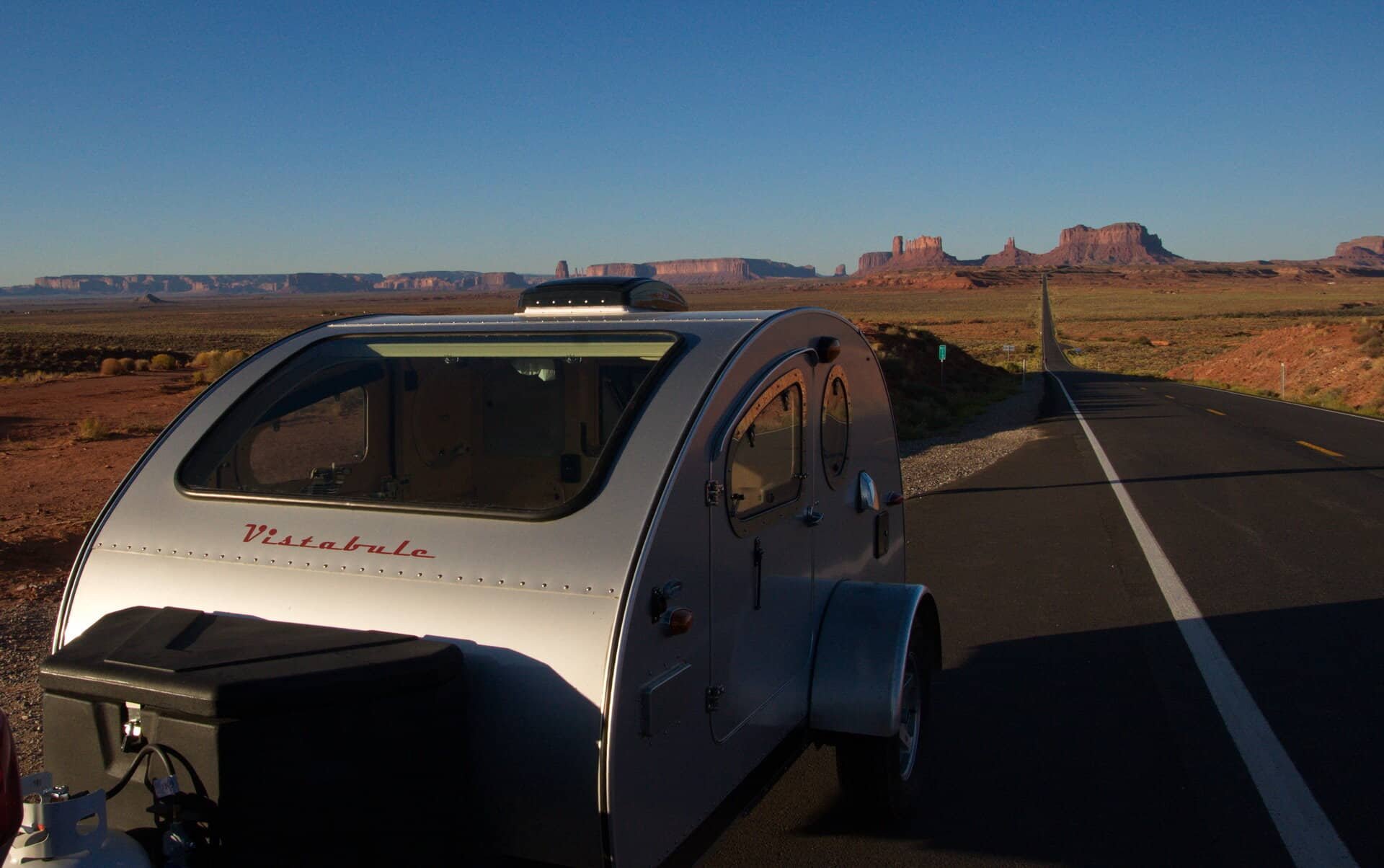
Practice backing up: backing a trailer up is somewhat difficult for beginners, so practice in your driveway or in an empty parking lot so you can be prepared when you get to camp.
TEARDROP CAMPING TRIPS: WHERE TO CAMP
Once you have all the preparatory details taken care of, you can get started planning your teardrop adventure. With a camper in-tow, you can go almost anywhere, whether it’s the local campground or a remote wilderness location on the other side of the country. Look to these resources in order to get started planning your next road trip.
HELPFUL TEARDROP CAMPING GEAR
While a teardrop camper and the standard gear you keep staged there can provide many comforts of home, there are supplemental items that can make the overall camping experience that much more enjoyable:
- Awnings and Pop-up Shelters: these can help keep you dry during rainy weather and can be connected to the backend or sides of your teardrop, or used as a separate enclosure altogether.
- Bug Protection: keeping mosquitos and other pests away will help you enjoy the outdoors and stay safe – protective clothing, pop-up screen shelters and proper repellents are all options to consider
- Emergency Gear: make sure to bring along an emergency tool kit – always include a multi-tool, ax or hatchet, first-aid kit, flashlight, lighter and fire starter.
- Cell Phones and Portable Electronics: fully charge everything before you leave; remember chargers and cables for all your devices; bring extra batteries; consider a cell phone signal booster for remote areas; download content if a signal isn’t an option
WHAT YOU NEED TO KNOW ABOUT TEARDROP CAMPING IN BAD WEATHER
In bad weather, teardrop campers can withstand the elements. Rain, wind, and snow may hinder your ability to enjoy the outdoors but you can always hunker down in your cozy teardrop and pass the time playing cards, reading a good book, or just relaxing listening to the pitter-patter of raindrops against your teardrop’s windows.
Entry/exit in inclement weather can be a challenge. As with tent camping, keeping the rain, mud, etc. out is always the goal. Late-night bathroom visits in particular are worthy of advance planning. Simple awnings that extend over the side entry doors provide a dry porch to get in and out of wet shoes and outerwear.
Scouting the path to campground facilities helps when in developed locations. When exploring more remote locations, one of the numerous portable toilet options is worth considering.
In stormy, windy weather, cooking may be the most difficult part of camping in your teardrop. Most teardrop models include a kitchen galley that provides valuable overhead protection when the hatch is open while soft side wings block side wind and rain.
Because it’s located off the back, you will have to brave the elements to some degree for camp cooking. Thankfully, there are easy set-up shelters you can purchase to help cover the entire kitchenette so you can stay dry or even bug-free.
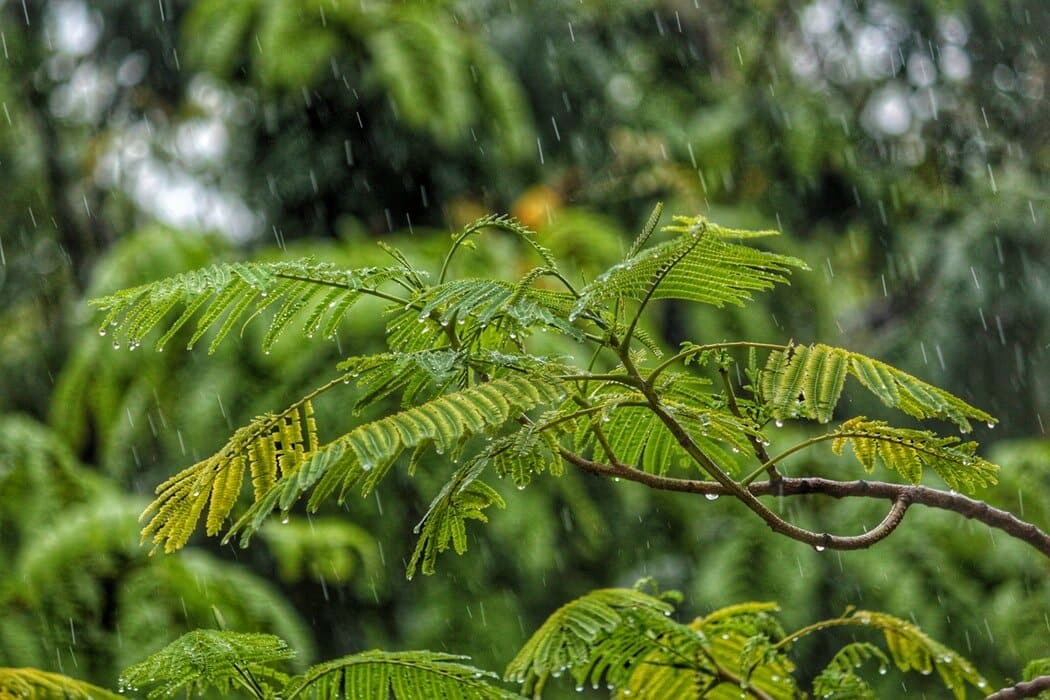
In bad weather, teardrop campers can withstand the elements. Rain, wind and snow may hinder your ability to enjoy the outdoors but you can always hunker down in your cozy teardrop.
DO TEARDROP TRAILERS HAVE BATHROOMS?
Teardrop trailers contain almost everything you need for a camping trip, except for a dedicated bathroom. There are several workarounds to this dilemma, however. For example, many teardrop camper owners choose to camp near a restroom or bathhouse at the campsite.
If your adventures take you off-grid, there are a few products on the market that can help alleviate the pressure of not having an accessible bathroom:
- Cleanwaste Go Anywhere Complete Portable Toilet System: if you’d like to leave the flush behind, this pop-up porta-potty provides complete privacy within a zippered tent, giving you comfort and convenience when needed.
- Dometic 972 Portable Toilet: if your a fan of flushing, this 2.6-gallon option is built to last and features touch-button flush technology
- RinseKit POD Portable Shower: this portable shower can supply 1.5 gallons of hot or cold water, perfect for cleaning up on-the-go.
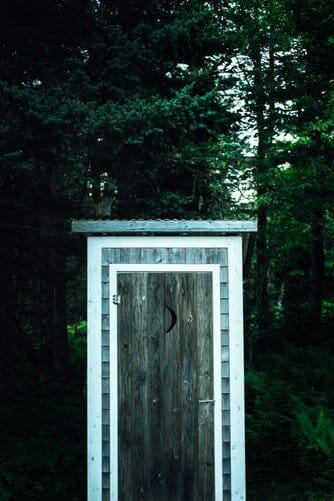
CAMPFIRE COOKING: MAKE DELICIOUS MEALS OUTDOORS
One of the best things about a teardrop camper is the galley kitchen. The chance to enjoy a properly prepared and well-cooked meal in nature only makes the camping experience that much better. To make it easier for you, here are some tips on how to make cooking and meal planning easier when camping in a teardrop:
- Save space: there’s limited space in a teardrop’s galley and you need to be realistic about what will fit. Recipes that require fewer ingredients will help you save space for other things like utensils, pots and appliances. You can pre-measure ingredients you need for a specific recipe, like sugar, flour and spices.
- Avoid breakable items: since things can shift in transit, try to avoid glass, ceramic or overly heavy to avoid breaks and mishaps.
- Avoid breakable foods: some foods just aren’t travel friendly. For example, eggs can break very easily while traveling. Use some creativity by pre-cracking eggs and putting them into a watertight plastic container to avoid a mess.
- Put a spice rack together to keep in the camper: include the basics – salt, pepper, garlic powder, etc. – as well as a few of your favorites to spice things up.
- Refrigeration: if you don’t have a powered refrigerator, bring an ice cooler to keep those perishable items you can’t live without cold.
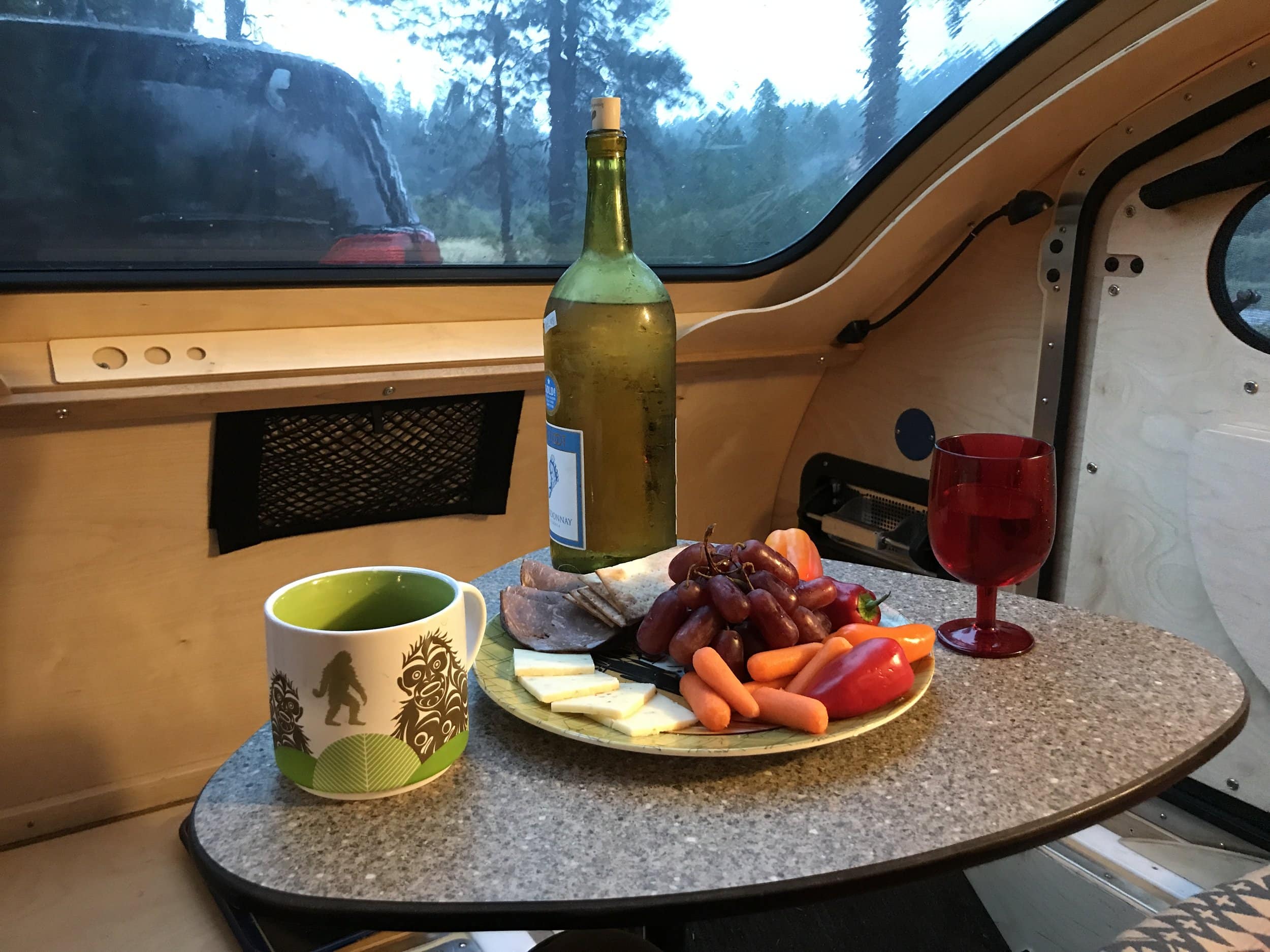
Recipes that require fewer ingredients will help you save space for other things like utensils, pots and appliances.
MORE INFORMATION: TEARDROP CAMPING TIPS AND TRICKS
Want to learn more about teardrop campers and how to make the most of your camping experience? Look no further. Here are some additional resources from the Vistabule team:
- The Ultimate Guide to Teardrop Campers
- Teardrop Trailer Resources
- Frequently Asked Questions
- Teardrop Camper Prices: How Much Does a Teardrop Camper Cost?
We are here to make your teardrop camper dreams come true! Our interactive pricing sheet is here to guide you!
Related Posts
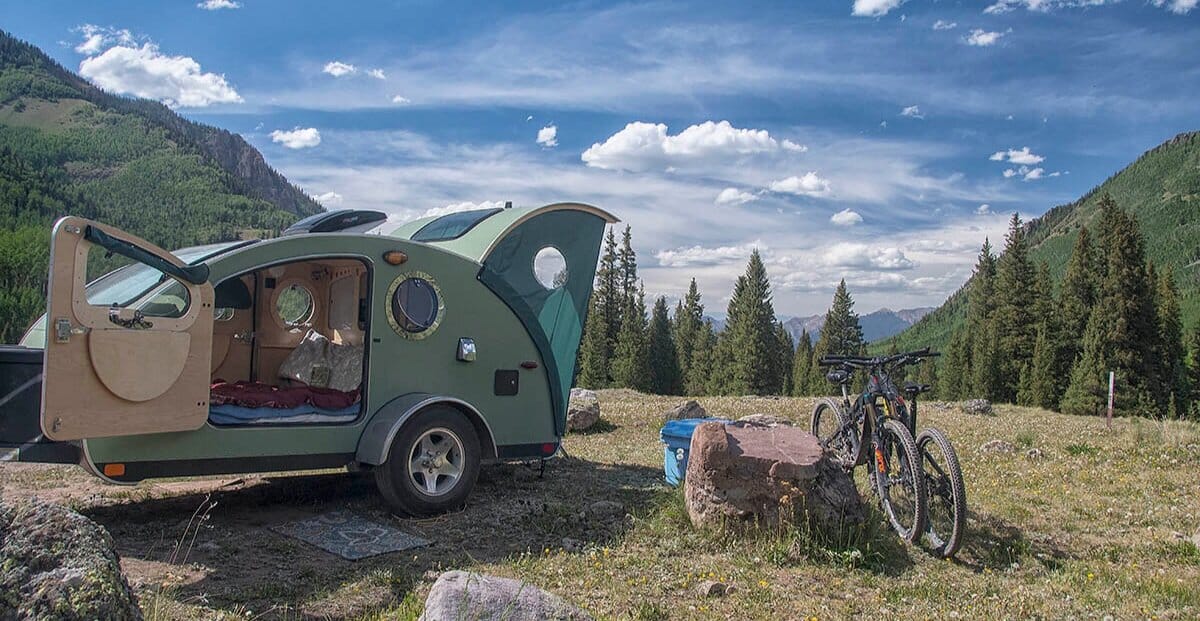
Dry Camping: A Complete Guide for Beginners
Is there any better way to spend your time than traveling the country? When it comes time to find a place to stay throughout your travels, you may want to consider dry camping. This guide was developed to help you learn more about the practice and what it takes to improve the overall experience.

